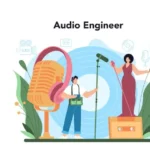
How to Become a Fast Learner: 7 Tips to Help You Learn Quickly
July 21, 2022There’s no one answer to that question, as everyone learns differently. However, there are some things that quick learners have in common. Here are a few tips to help you become a quick learner.
Contents
Understand your learning style.
When it comes to learning, everyone is different. Some people learn best by listening to audio recordings, others by reading texts, and others through interactive activities. There is no single learning style that is better than the others – it simply depends on what works best for you.If you’re not sure what your learning style is, there are a few ways to find out. One is to simply think about how you learn best. Do you prefer to listen to audio recordings? Do you find that you learn best when you’re actively doing something? Or do you prefer to read texts?Another way to determine your learning style is to take a learning styles quiz. There are many different quizzes available online, so you can easily find one that suits your needs. Once you’ve taken a quiz, you’ll likely be able to see which learning style or styles are best for you.Once you know your learning style, you can start to find resources that cater to your needs. If you’re a visual learner, for example, you might want to look for videos or infographics that explain concepts. If you’re a kinesthetic learner, you might prefer interactive activities or games. And if you’re an auditory learner, you might find audio recordings or podcasts more helpful.Of course, you don’t have to strictly stick to one learning style. You might find that you learn best when you mix and match different methods. For example, you might want to listen to a podcast while following along with written transcripts. Or you might want to watch a video and then do some hands-on activities to solidify your understanding.Experiment and find what works best for you. With a little trial and error, you’ll be able to find a learning style – or combination of learning styles – that helps you learn more effectively.
Before you can begin to understand your learning style, it is important to first understand the different types of learning styles. There are three primary learning styles: visual, auditory, and kinesthetic. Each person typically has a dominant learning style, though it is not uncommon for people to use a combination of all three.Visual learners prefer to take in information through visual aids such as charts, graphs, and diagrams. They often find it helpful to highlight important information or take notes while they are reading.Auditory learners prefer to hear information in order to learn it. They often find it helpful to read aloud, listen to audio recordings, or participate in discussions.Kinesthetic learners prefer to learn through hands-on experience. They often find it helpful to take part in simulations, role-playing, or other active learning activities.Once you have a better understanding of the different types of learning styles, you can begin to identify your own. There are a few different ways to do this. One is to think about how you learn best. Do you prefer to read texts, listen to lectures, or participate in hands-on activities? Another way to identify your learning style is to think about how you remember information best. Do you remember information better when you see it, hear it, or do it yourself?Once you have a good understanding of your own learning style, you can begin to adapt your study habits to better suit your needs. If you are a visual learner, you might find it helpful to create charts or diagrams to organize information. If you are an auditory learner, you might find it helpful to read texts aloud or listen to audio recordings. If you are a kinesthetic learner, you might find it helpful to participate in hands-on activities or simulations.No matter what your learning style, there are a number of different ways to learn effectively. The most important thing is to find what works best for you and to use your learning style to your advantage.
Have a clear learning goal.
It’s important to have a clear learning goal when you’re studying for an exam. You need to know what you want to achieve and how you’re going to get there. Otherwise, you’ll just be wasting your time. Make sure you have a clear understanding of the material you’re supposed to be learning. If there are any areas you’re unsure about, ask your teacher or tutor for help. Once you have a good understanding of the material, start practicing. If you can find practice exams, take them. If not, try making up your own questions and testing yourself. Keep track of your progress as you go along. This will help you stay motivated and on track. Don’t wait until the last minute to start studying. You’ll only end up feeling overwhelmed and stressed out. Start early and take your time. If you need to, break up your studying into smaller chunks so you don’t get overwhelmed. Most importantly, don’t give up. If you hit a roadblock, take a break and come back to it later. You can do this!
Focus on one specific thing.
No matter where you fall on the spectrum, there is always at least one specific thing that you can focus on learning. It may be a skill related to your job, a new hobby you’ve been wanting to try, or something else entirely. The important thing is to have a clear goal in mind. Once you know what it is you want to learn, you can start taking steps to make it happen. If you’re not sure where to start, there are plenty of resources available to help you. There are books, websites, classes, and more. You can also reach out to friends, family, and colleagues for advice and guidance. The most important thing is to just get started. Learning can be a rewarding experience, and the more you do it, the easier it becomes. So don’t be afraid to dive in and start learning something new today.
Create and follow a strict learning plan.
Creating a learning plan can help you focus your studies and make the most efficient use of your time. By setting specific goals and strategies, you can tailor your learning plan to your individual needs and ensure that you make the progress you want. When creating a learning plan, there are a few key elements to keep in mind:
1. Set specific goals.
It’s important to have a clear idea of what you want to achieve through your learning plan. Do you want to improve your grades in a particular subject? Boost your score on a standardized test? Master a new skill? Whatever your goals may be, make sure they are specific, measurable, achievable, relevant, and time-bound (SMART).
2. Select appropriate resources.
Once you know what you want to achieve, you can start to identify the resources you’ll need to help you reach your goals. This might include textbooks, online courses, video lessons, practice tests, and so on.
3. Develop a study schedule.
One of the most important parts of a learning plan is a study schedule. This should include a list of the topics you want to cover and when you plan to study them. It’s important to be realistic when creating your study schedule, as you’ll need to factor in other commitments like work, school, and family.
4.Create a review system.
In order to ensure that you are retaining the information you are studying, it’s important to create a review system. This might involve taking practice quizzes, writing summaries of each lesson, or creating flashcards.
5.Get organized.
Finally, it’s important to get organized and create a system that works for you. This might mean keeping all of your materials in one place, setting up a dedicated study space, or using a planner to keep track of your progress.
By following these tips, you can create a learning plan that will help you make the most of your time and achieve your goals.
Set up and follow a daily study routine.
Assuming you would like tips for setting up and following a daily study routine:
1. Set a regular time for studying each day and stick to it as much as possible.
Whether it’s first thing in the morning, during your lunch break, or before bed, find a time that works for you and make it a habit.
2. Get rid of distractions.
Turn off your phone, log out of social media, and find a quiet place to work. If you can’t avoid distractions altogether, try wearing noise-cancelling headphones or listening to calm music to help you focus.
3. Start with the hardest tasks.
Getting the most difficult assignments out of the way first will be a weight off your mind and will make the rest of your studying feel easier.
4. Take breaks.
It’s important to focus while you’re studying, but it’s also important to give your brain a break now and then. Get up and stretch, take a short walk, or grab a healthy snack to reenergize yourself.
5. Reward yourself.
After you’ve finished studying for the day, take some time to relax and do something you enjoy. This will help you stay motivated and will make studying feel like less of a chore.
Make use of different educational tools.
There are many different types of educational tools available to help students learn. Some students prefer visual aids, while others prefer hands-on learning. Some students prefer to learn in a traditional classroom setting, while others prefer to learn online. No matter what type of learner you are, there are educational tools available to help you succeed. If you are a visual learner, consider using flashcards or watching educational videos. If you are a hands-on learner, consider attending a workshop or taking a class. If you are a traditional learner, consider attending a brick-and-mortar school. If you are an online learner, consider taking an online course. No matter what your learning style is, there are educational tools available to help you learn. With so many options available, there is no excuse not to succeed. So get out there and start learning!
Take notes to remember important concepts.
When it comes to studying for exams, taking notes is one of the most important things that you can do. This is because notes serve as a way to remember important concepts that you have learned. If you do not take notes, then you will likely forget much of the information that you have learned. Therefore, when you are studying for exams, be sure to take plenty of notes. Another important tip for studying for exams is to write out long blog posts. This is because writing can help to solidify concepts in your mind. When you are studying for exams, take the time to write out long blog posts on the topics that you are studying. This will help you to better remember the information that you have learned.
In order to become a quick learner, you must first be willing to learn. Then, you must be able to focus and pay attention to what you are trying to learn. Finally, you must be able to practice and apply what you have learned. If you can do all of these things, you will be well on your way to becoming a quick learner.









